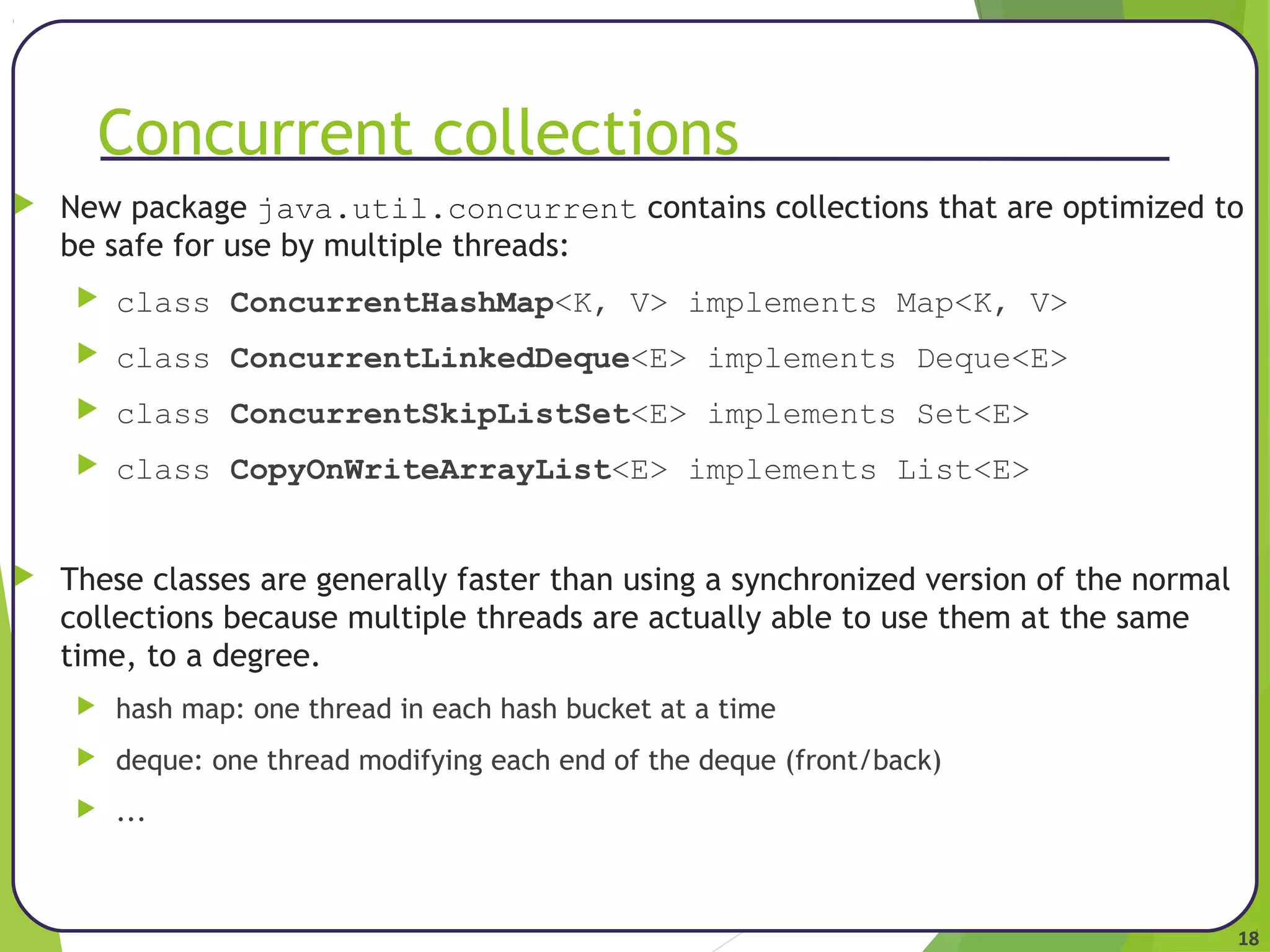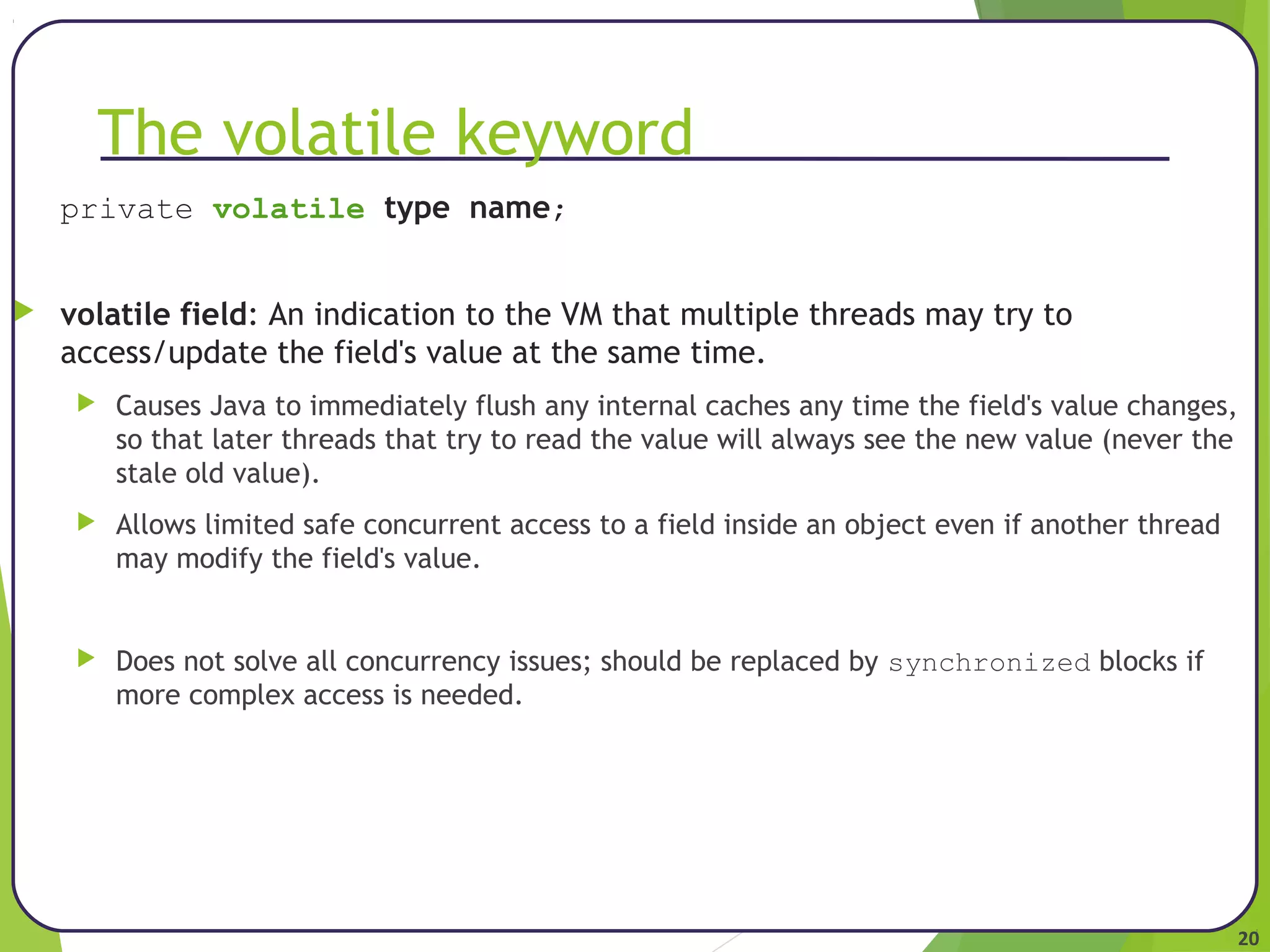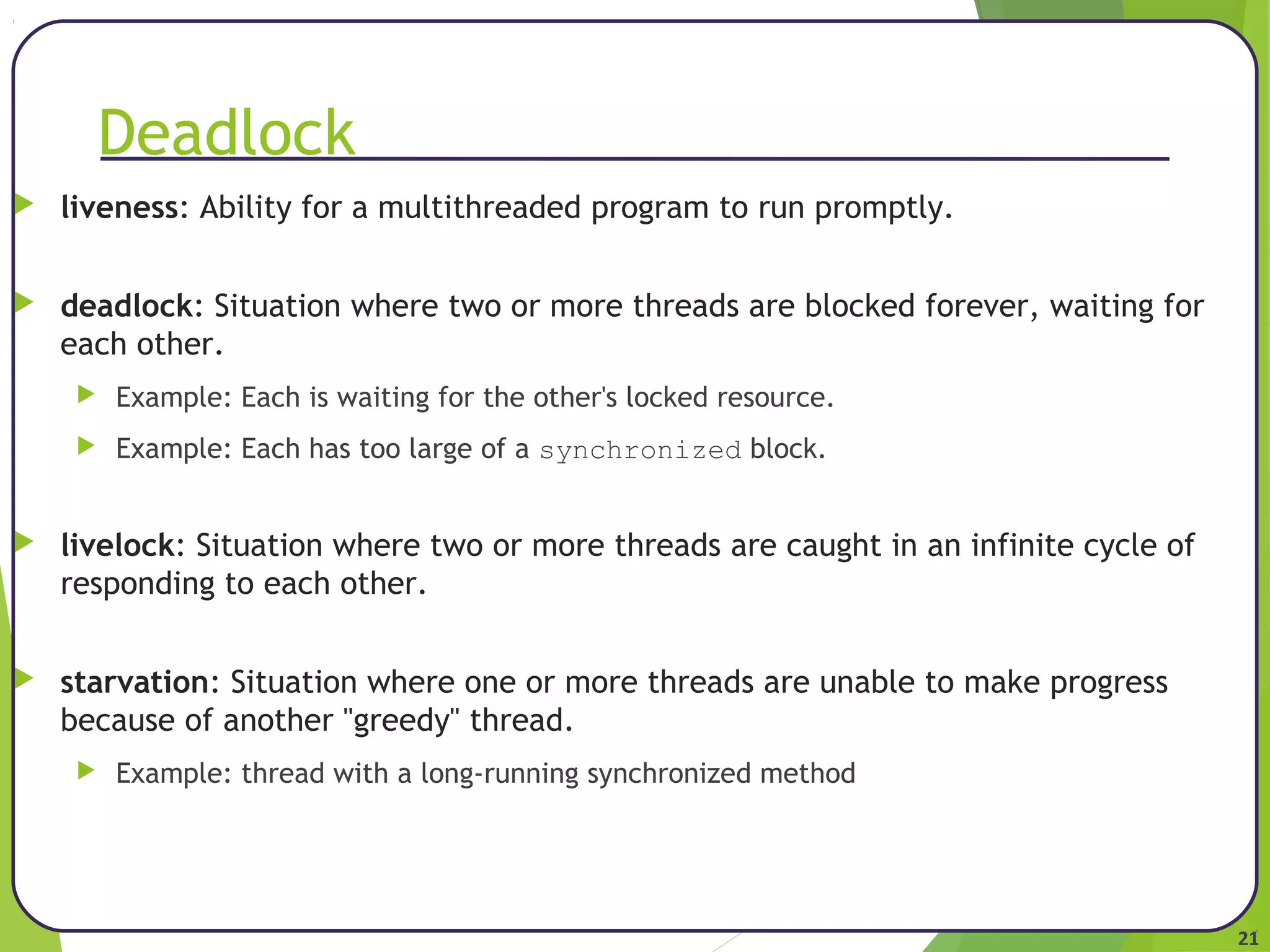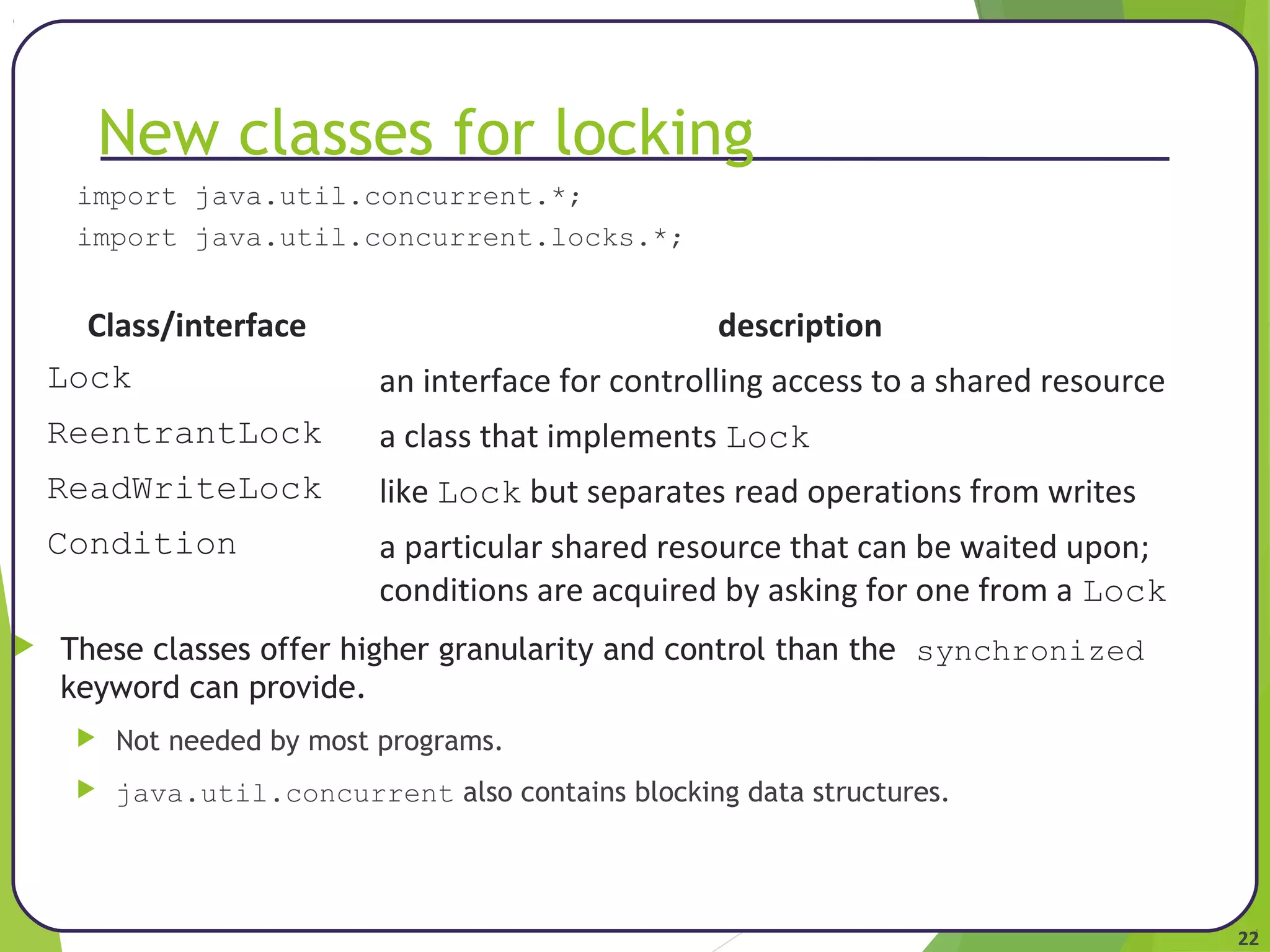This document provides an introduction to concurrency in Java programming. It discusses modifying a word counting program to run in parallel using threads. It covers thread safety, critical sections, synchronized blocks and methods, lock objects, and other concurrency concepts in Java like volatile fields and deadlocks. The document uses examples to illustrate how to design thread-safe classes and properly synchronize access to shared resources between multiple threads.

![2
Example program
Suppose we have a program that reads several files and counts the total number of
unique words in all the files combined.
How can we modify the program to run in parallel using threads?
public class WordCounts {
public static void main(String[] args)
throws FileNotFoundException {
Set<String> words = new HashSet<String>();
long startTime = System.currentTimeMillis();
String[] files = {"bible", "abe", "hamlet", "tomsawyer"};
for (String filename : files) {
readFile(filename, words);
}
long endTime = System.currentTimeMillis();
long elapsed = endTime - startTime;
System.out.println("There are " + words.size()
+ " unique words.");
System.out.println("Took " + elapsed + " ms.");
}
...](https://image.slidesharecdn.com/javaconcurrency-141003131630-phpapp02/75/Java-concurrency-2-2048.jpg)
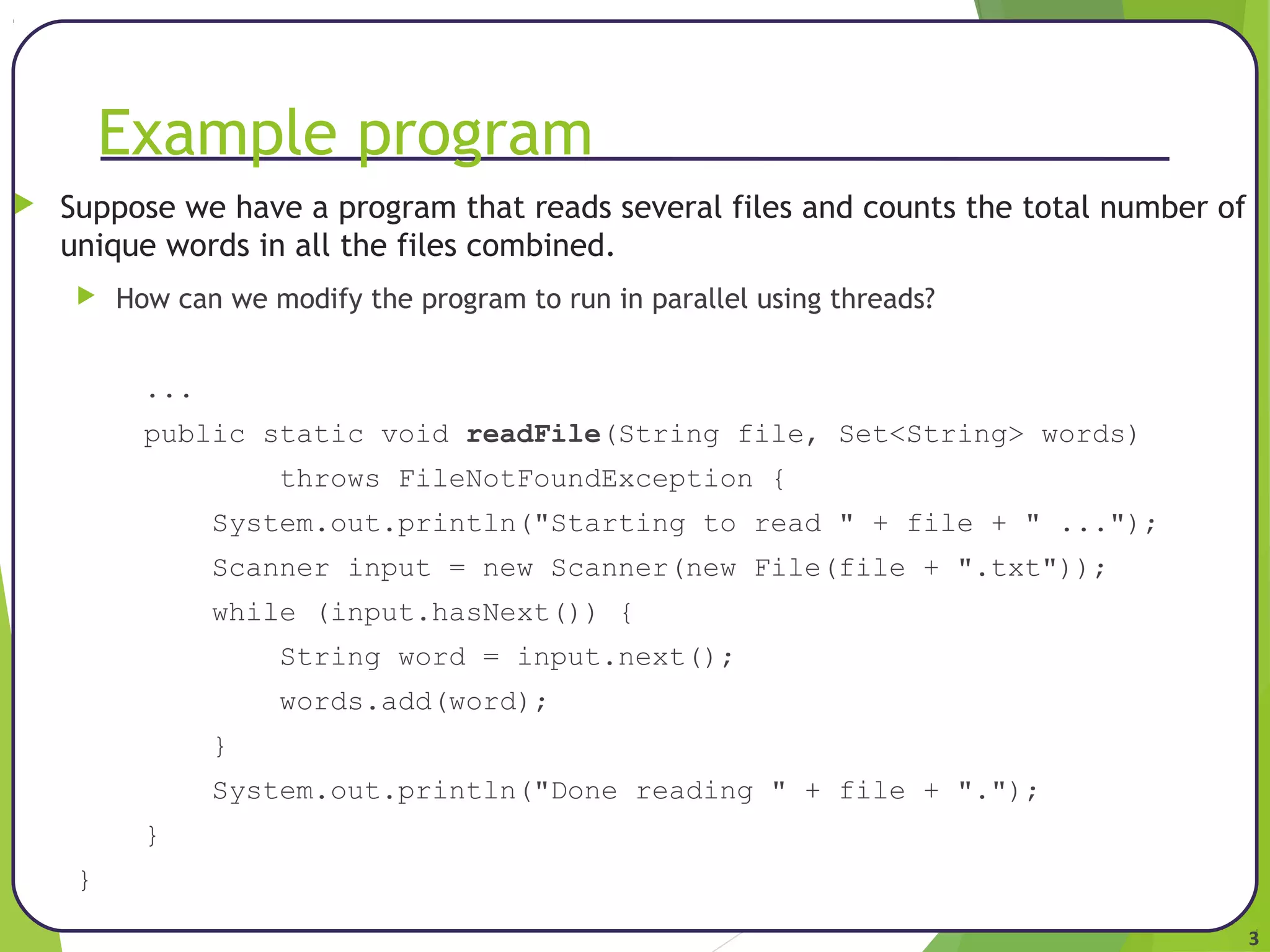

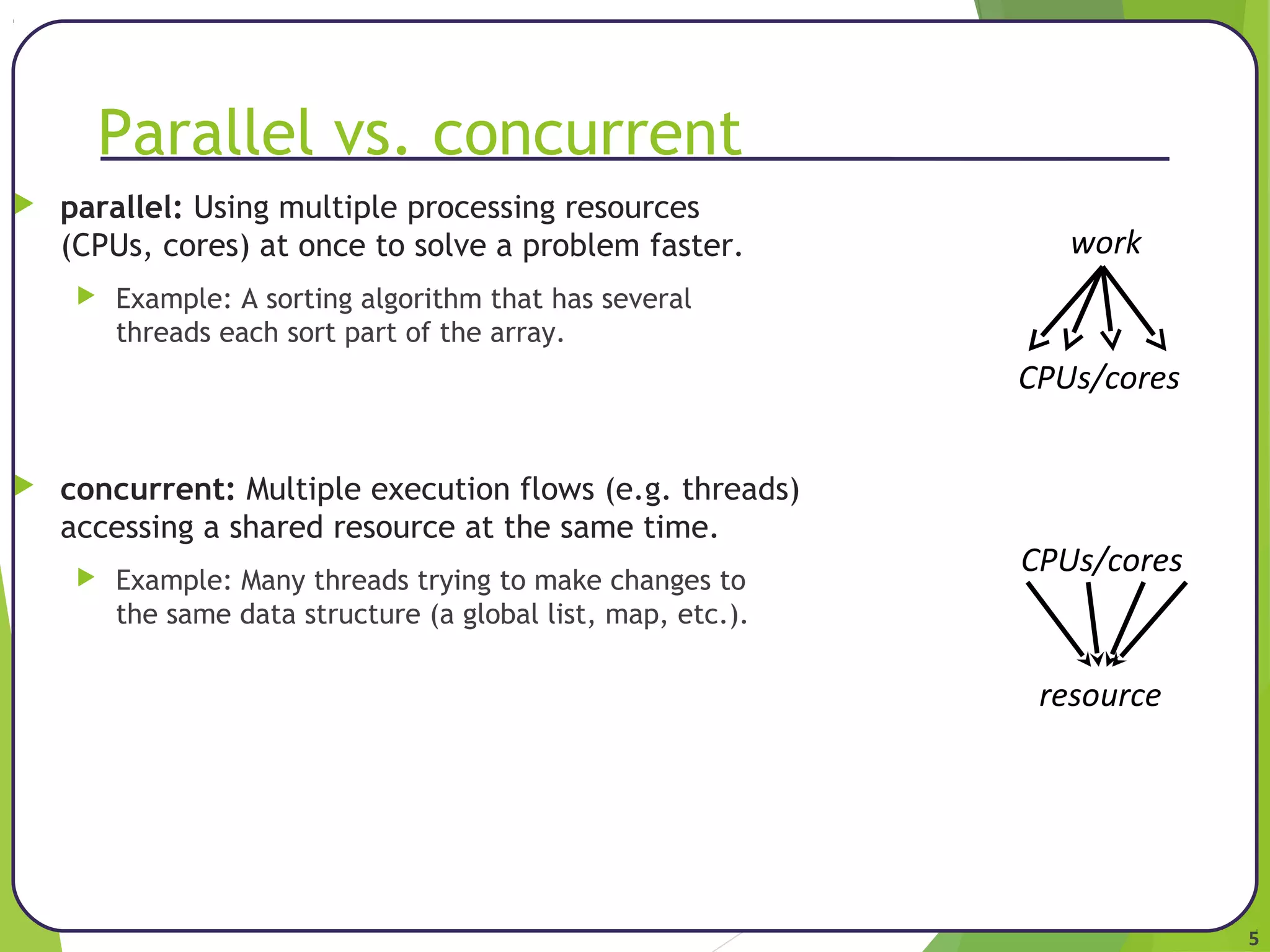
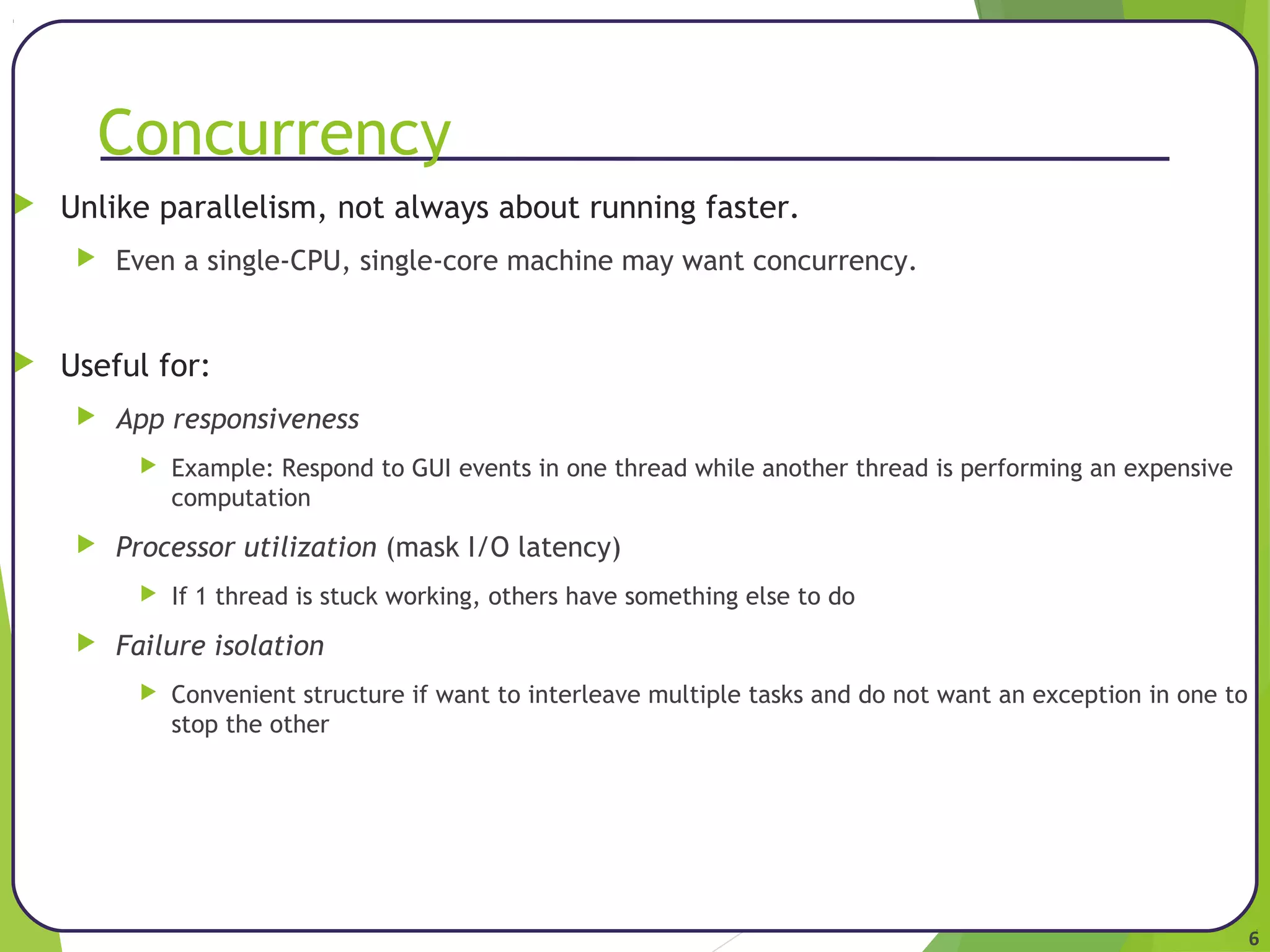
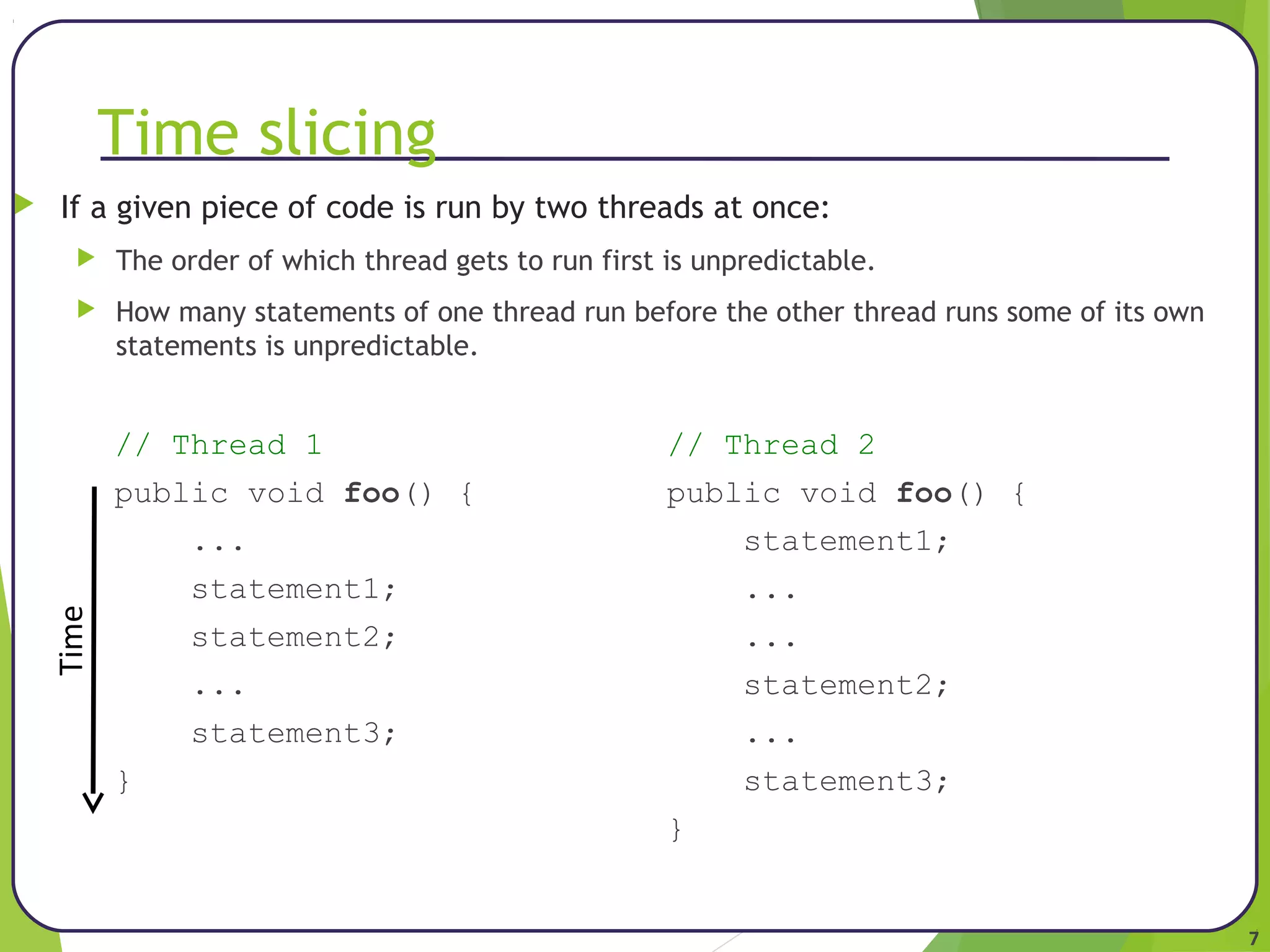
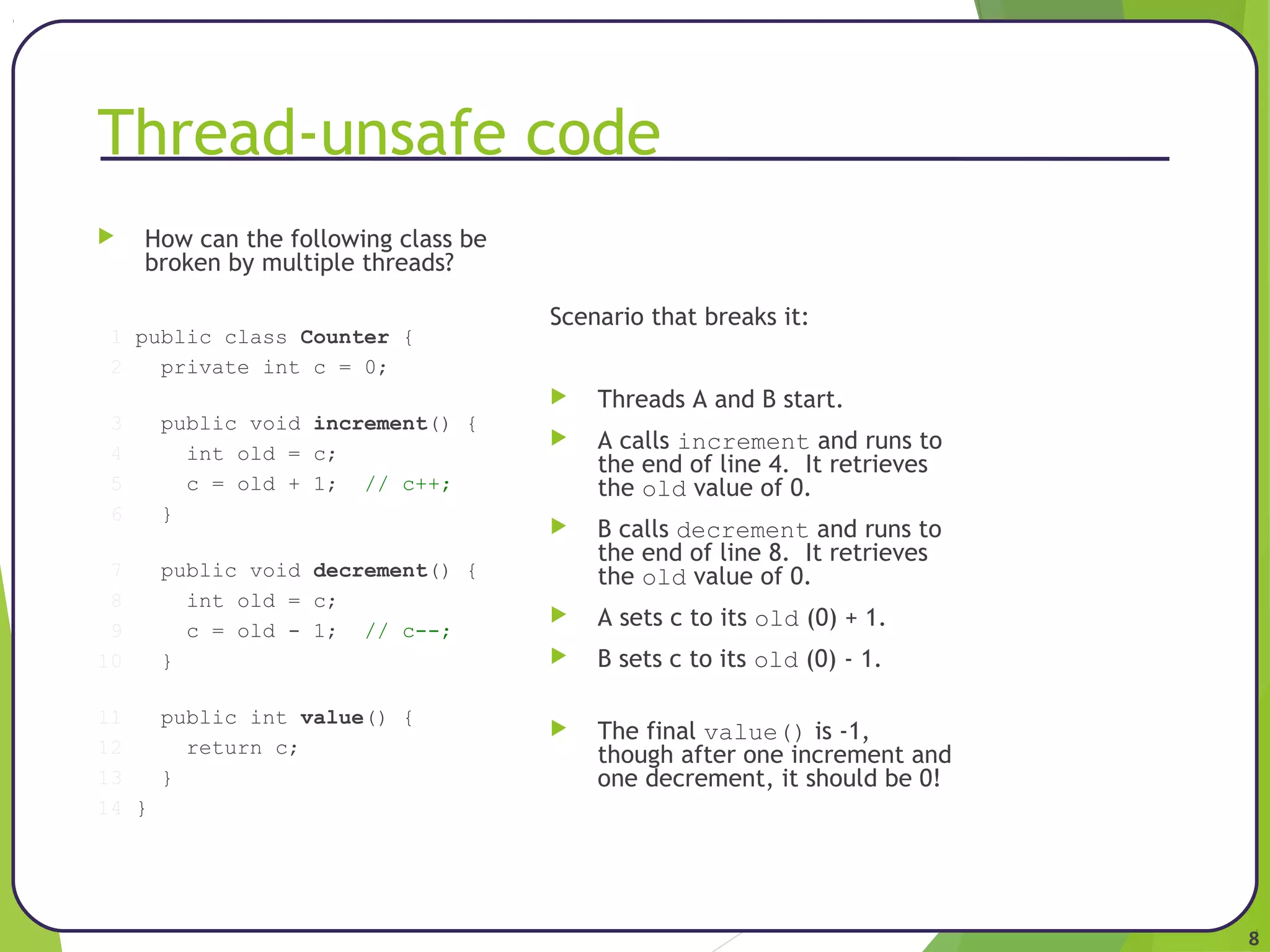

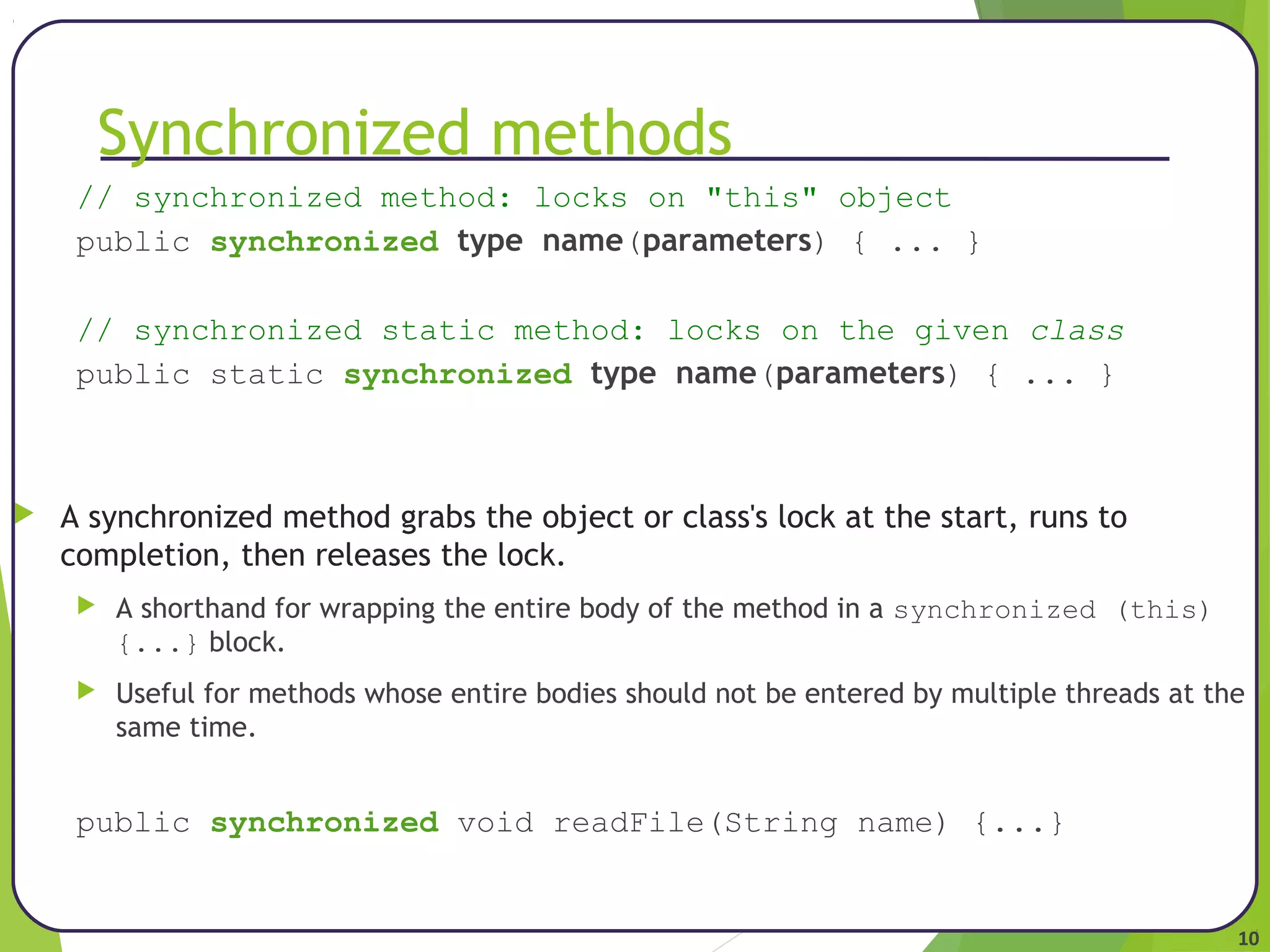

![• critical section: A piece of code that accesses a shared resource that
must not be concurrently accessed by more than one thread.
12
Critical section problem
Multiple threads write to the set, so its state can become corrupted.
Inside the HashSet's add method looks something like this:
// Thread 1: add(42);
public void add(E value) {
int h = hash(value); // 2
Node n = new Node(value);
n.next = elements[h];
...
...
...
...
elements[h] = n;
size++;
}
...
...
...
...
// Thread 2: add(72);
public void add(E value) {
int h = hash(value); // 2
Node n = new Node(value);
n.next = elements[h];
...
...
elements[h] = n; // 42 lost
size++;
}
Time](https://image.slidesharecdn.com/javaconcurrency-141003131630-phpapp02/75/Java-concurrency-12-2048.jpg)


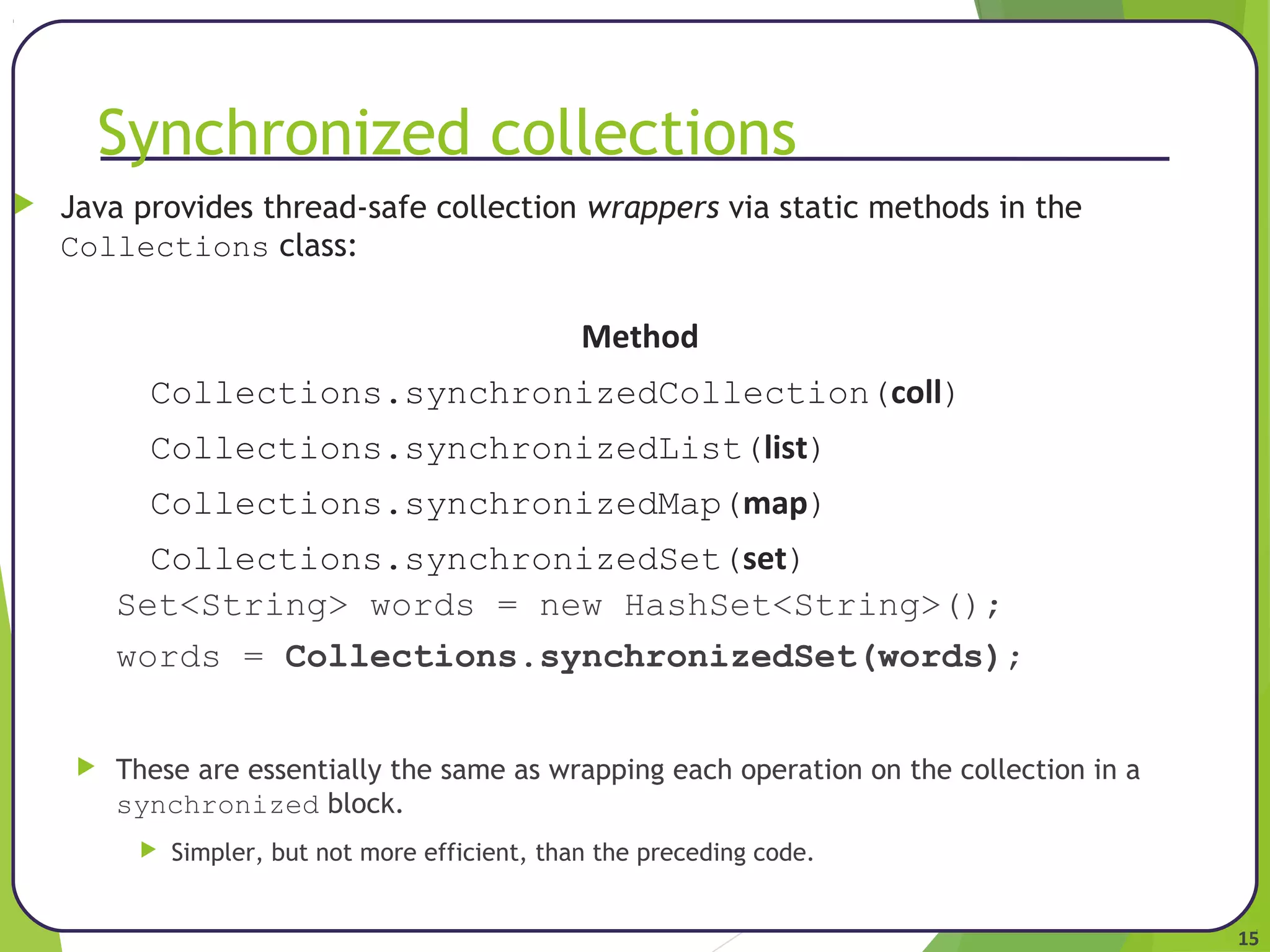
![16
Fine-grained critical sections
Technically, the shared resource is the linked list in the given hash bucket
elements[h], not the entire hash table array.
What if the set could lock just that bucket?
If my thread is updating bucket h, other threads that wanted to read/write other hash
buckets besides h could still do so.
Example:
index 0 1 2 3 4 5 6 7 8 9
value
11 24 7 49
lock bucket 4
still okay to read bucket 7
54
14](https://image.slidesharecdn.com/javaconcurrency-141003131630-phpapp02/75/Java-concurrency-16-2048.jpg)
![17
Fine-grained locking
// keep a lock for each bucket
// Thread 1: add(42);
public void add(E value) {
int h = hash(value); // 2
Node n = new Node(value);
...
...
...
...
synchronized (locks[h]) {
n.next = elements[h];
elements[h] = n;
size++;
}
}
...
...
...
...
// Thread 2: add(72);
public void add(E value) {
int h = hash(value); // 2
Node n = new Node(value);
...
synchronized (locks[h]) {
... blocked ...
... blocked ...
... blocked ...
n.next = elements[h];
elements[h] = n;
size++;
}
}
Time](https://image.slidesharecdn.com/javaconcurrency-141003131630-phpapp02/75/Java-concurrency-17-2048.jpg)
